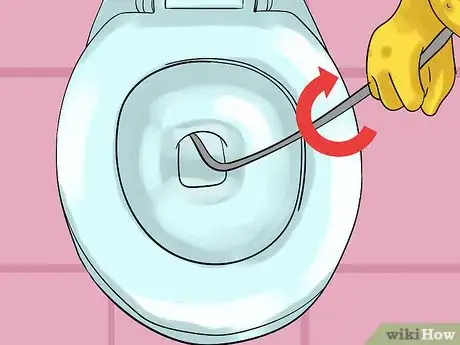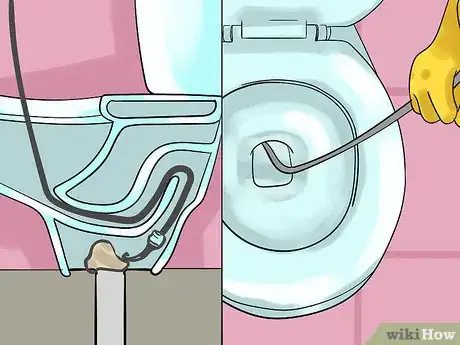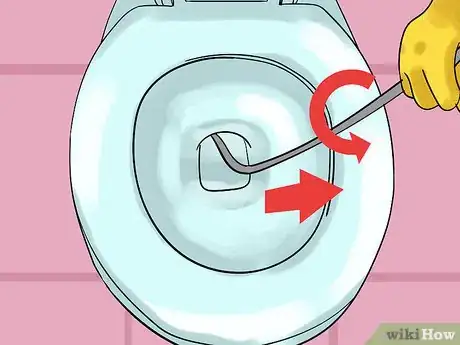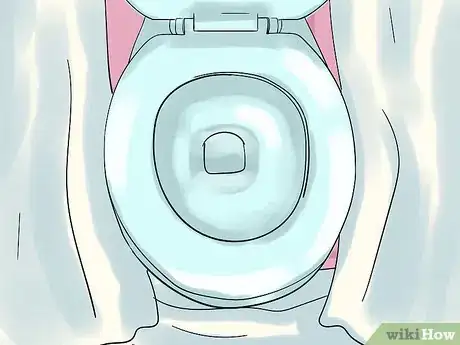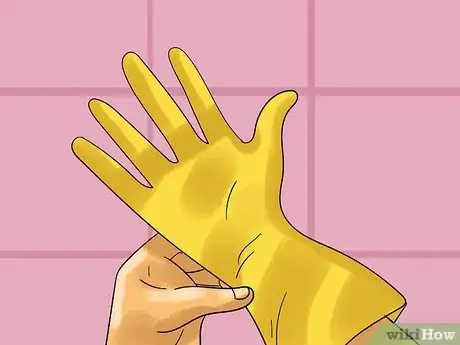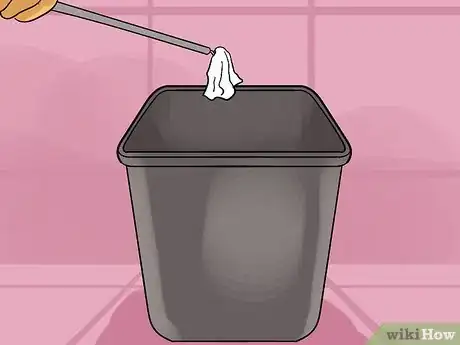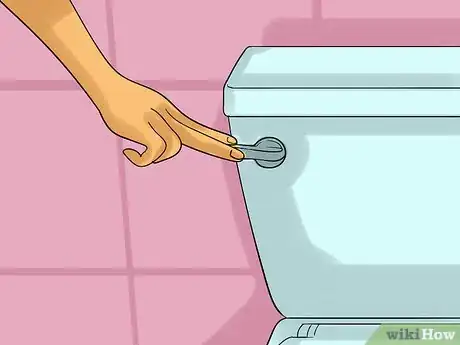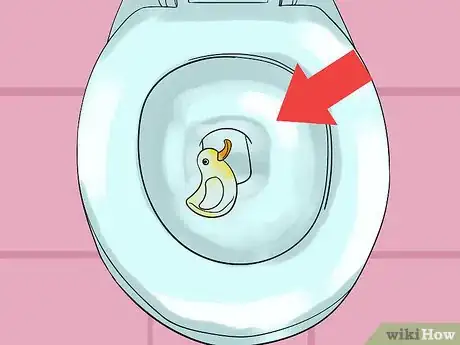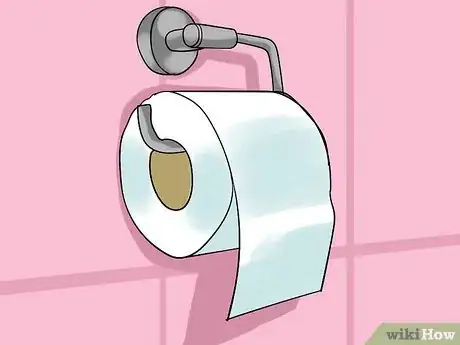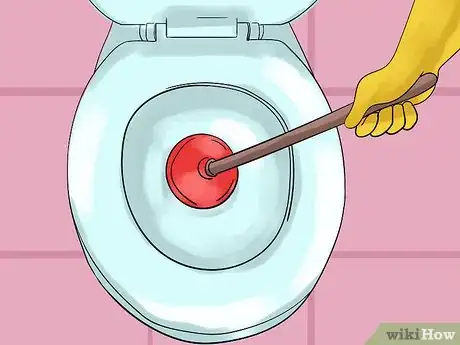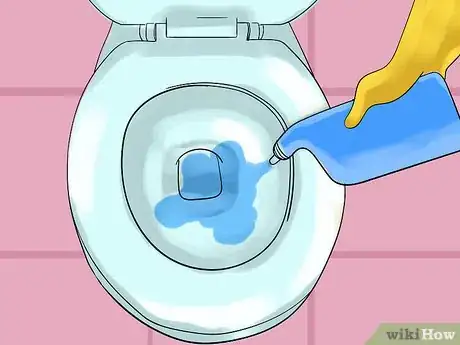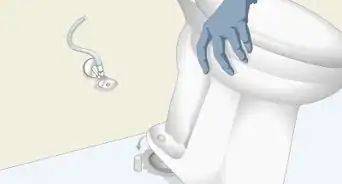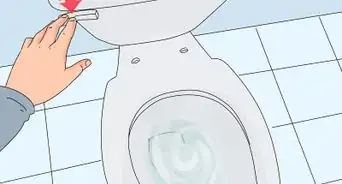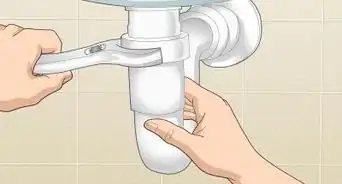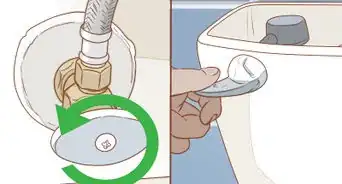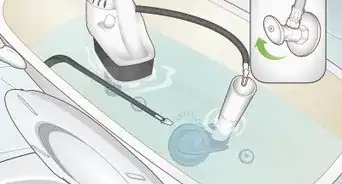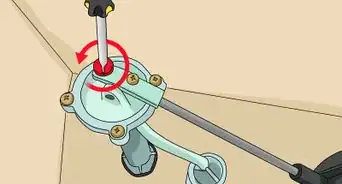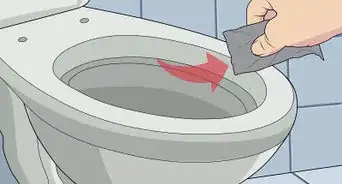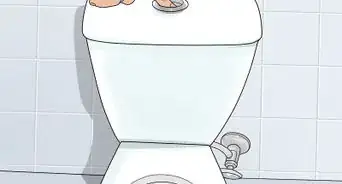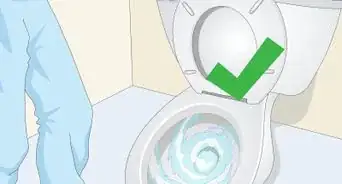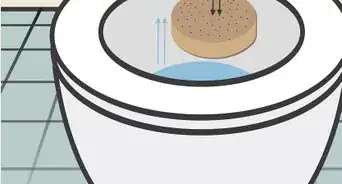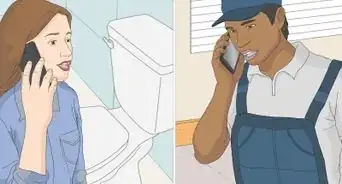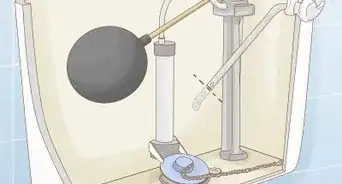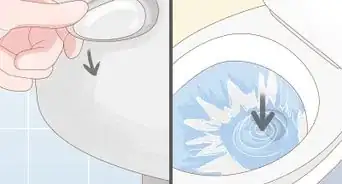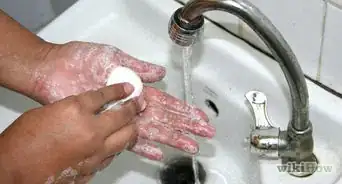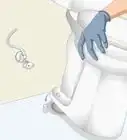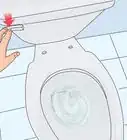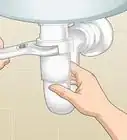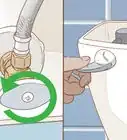This article was co-authored by James Schuelke. James Schuelke, along with his twin brother David, is the co-owner of the Twin Home Experts, a licensed plumbing, leak detection, and mold inspection company based in Los Angeles, California. James has over 32 years of home service and business plumbing experience and has expanded the Twin Home Experts to Phoenix, Arizona and the Pacific Northwest.
There are 12 references cited in this article, which can be found at the bottom of the page.
wikiHow marks an article as reader-approved once it receives enough positive feedback. In this case, 85% of readers who voted found the article helpful, earning it our reader-approved status.
This article has been viewed 275,497 times.
A snake, also known as an auger, is a plumbing tool used to break up and remove clogs that have become impacted in narrow pipes. The snake’s unique design allows it to flex and infiltrate the tricky curves of the toilet’s lower plumbing, which is beyond the reach of conventional tools. Snaking itself is easy and only requires one simple movement, but it’s important that you know how to properly dispose of the extracted materials, keep your workspace clean and protect your pipes.
Steps
Using the Snake
-
1Place the end of the snake into the toilet. Unfurl the snake and lower the bulbous metal end into the toilet bowl. Begin the feeding the snake into the mouth of the drain. At the end of the snake is a curved hook, which will help break up and grab debris that has accumulated in the pipes.
- Make sure the plastic coating on the end of the snake is intact so it doesn’t scratch the porcelain. If it is not, wrap it in duct tape.
- If everything is properly inserted, you should not be able to see the cable
-
2Turn the crank handle clockwise. Once the snake is in position, start steadily rotating the handle on the opposite end. This will extend the snake and force its length slowly through the pipes. Plumbing snakes are constructed with flexible metal coils, so it will be able to bend and follow the contours of the pipes as it is unwound.[1]
- If it doesn’t turn, pull the snake back a little ways and quarter turn the handle counterclockwise and try again.
- Unclogging a toilet with a snake is as simple as turning the crank a few times.
Advertisement -
3Feel around for the clog in the pipes. If you notice the snake slowing down or coming to a stop, it may have encountered resistance. Jostle the shaft slightly to help the snake loosen up whatever is stuck deep in the pipes. Continue turning the handle in a clockwise direction until the snake clears the pipe.[2]
- Don’t be rough with the shaft of the snake or try to draw out the clog by force. Just keep winding and unwinding and let it wear down the clog on its own.
-
4Break up or pull out as much of the clog as you can. After you locate and work over the clog, rotate the handle in the opposite direction (counterclockwise) to retract the snake and examine what it has collected. Always pull out the clog rather than trying force it deeper into the pipe. Repeat this process until the pipe is completely unobstructed.[3]
- Pushing the clog further in may end up making the problem worse, as eventually it can get so deep that you can no longer reach it.[4]
- Always make sure to sanitize your snake after each use. This can be accomplished by rinsing the snake off outside with a garden hose. You can also leave the end of the snake in the toilet for a few flushes after you've added toilet bowl cleaner.[5]
Preparing the Area and Disposing of the Clog
-
1Cover the floor around the toilet. Lay down a couple of towels or a sheet of plastic to protect the floor. It’s possible that water may splash out of the toilet bowl as the snake works on the clog. This water will often become dingy as whatever is causing the clog disintegrates and leeches back through the pipes. Covering the floor can keep you from having to deal with a second mess later on.[6]
- If you’re using a towel, wash it immediately after you’re finished and wipe down the floor beneath with a disinfecting solution.
-
2Wear gloves. Things are likely to get messy, so pull on a pair of rubber gloves to provide a barrier between your bare skin and whatever muck you may find on the other end of the snake. Toilets are full of germs, and if you don’t take proper care to protect your hands and keep them clean, the result may be illness and infection. Throw the gloves away when you’re finished and wash your hands for a full minute with antibacterial soap and hot water.[7]
- Debris that is snagged on the end of the snake will have to be removed by hand.
- Don’t forget to roll up your shirtsleeves as you work to get them out of the way.
-
3Have a trash bag or other receptacle ready. You’ve managed to pull out the clog that’s been blocking the pipe, but now what do you do with it? Rather than trying to flush it again and risk creating a new problem, have a trash bag or bucket on hand that you can put the icky clog material into. That way, you can simply drop the bag in the garbage or give the bucket a good rinse and carry on with your day.[8]
- A plastic grocery bag makes a perfect means of disposal. After you drop the offending clog inside, tie off the bag and chuck it in the trash.
-
4Flush the pipes with toilet cleaner. Once the job is finished, plunge the toilet a few times to get rid of any remnants of the clog. Then, pour some concentrated toilet bowl cleaner into the toilet and give it a couple flushes. The chemicals in toilet cleaning solutions are potent enough to dissolve and whisk away whatever residual debris remains in the pipes. As an added bonus, your latrine will be sparkly clean, sanitized and ready for use afterwards.[9]
- Only use cleaners that are intended for toilets. Regular drain cleaners can eat through galvanized plumbing pipes and wreak havoc on septic systems.
- A homemade declogging solution made from vinegar and baking soda can also work wonders on clearing out your pipes after they've been snaked. Simply pour about a cup of baking soda into the bowl, add two cups of vinegar (gradually, so that the mixture doesn't bubble over into the floor), wait ten minutes and flush.[10]
Preventing Future Clogs
-
1Only put water-soluble items in the toilet. Before putting anything in the toilet, make sure that it’s meant to be there. The list of things it’s okay to flush down the commode is pretty short: in most cases, human waste and toilet paper only. Never try to get rid of paper towels, Kleenex tissues, makeup pads, tampons, condoms, cardboard, hair or any other materials that aren’t easily dissolved by flushing them. You’ll just be setting yourself up for inconvenience (and possibly expensive plumbing repairs) later on.
- Toys are a leading culprit of clogs in households with small children. If you have kids, keep the door to your bathroom shut and make sure they know that it’s not a good place to play.
- Keep a small garbage can with a lid next to the toilet so you or guests can throw away non-flushables.
- If you’re not sure whether or not a certain item is safe to flush down the toilet, chances are it isn’t.
-
2Reduce the amount of toilet paper you use. Most clogs are caused by a buildup of excess toilet paper that gets stuck in the pipes before it has time to completely break down. Be aware of the amount of toilet paper you flush on a regular basis, and see that you only use as much as you need. If you have multiple bathrooms in your home, try using a different one from time to time so that one toilet’s plumbing isn’t constantly getting overworked.[11]
- Consider flushing twice if you think a single flush won’t manage.
- Be conservative. There’s no need to use half a roll of paper every time you wipe.[12]
- If you often find yourself troubled with clogs, consider switching to single ply toilet paper. It may not be as comfortable or absorbing, but it breaks down much faster after it’s flushed.
- If there’s a lot of toilet paper, hold half of the toilet paper back with a plunger when you flush. Flush again once it is finished.
-
3Identify the problem early. The best way to prevent a clog is to take note when you suspect one might be building up. If the water level in your toilet seems low, or it has trouble flushing or refills slowly, there may be an obstruction throttling the water flow somewhere. Use a plunger to dislodge clogs before they get bad enough that you have to break out the snake.[13]
- Look for bubbles in the water in the toilet bowl and keep an ear out for rattling in the pipes. These could also be signs of blockage.
- Snaking should be reserved for stubborn clogs. Plunging, cleaning and not putting anything in the toilet that doesn’t belong there should be your first defenses. If you’re careful, you’ll rarely find yourself in a situation that requires the use of an auger.
-
4Keep the toilet and pipes clean. Make sure that you’re cleaning your potty at least once or twice a month. Use chemicals specifically formulated for use in toilets and pay attention to any signs that suggest a clog might be forming. As has already been mentioned, chemical cleaners can help melt down stubborn clots of toilet paper and other gunk that’s become lodged in the pipes. Besides that, it will keep the place where you do your business fresh and pleasant.[14]
- Cleaning your toilet’s water jets ensures that it’s flushing at full power, which will help knock out potential messes caught in the plumbing.[15]
Warnings
- Failure to deal with clogs promptly and in the right way can lead to long-term, costly damage to your plumbing and sewer lines.⧼thumbs_response⧽
- Toilets are dirty places. Always be sure to wash your hands thoroughly after working on a clogged toilet.⧼thumbs_response⧽
Things You'll Need
- Plumbing snake (also known as an auger)
- Clogged toilet
- Towels or tarp to cover the floor
- Container for disposing of clog
- Rubber gloves
- Toilet cleaning solution
- Plunger (optional)
References
- ↑ https://www.youtube.com/watch?v=TK9gsl7XXkk
- ↑ http://www.artofmanliness.com/2009/09/03/how-to-unclog-a-toilet/
- ↑ http://www.familyhandyman.com/plumbing/toilet-repair/how-to-fix-a-clogged-toilet/view-all
- ↑ https://www.youtube.com/watch?v=TK9gsl7XXkk
- ↑ http://www.home-repair-central.com/how-to-snake-a-toilet.html
- ↑ https://www.youtube.com/watch?v=TK9gsl7XXkk
- ↑ https://www.youtube.com/watch?v=6elVl_cXnVA
- ↑ https://www.youtube.com/watch?v=TK9gsl7XXkk
- ↑ http://www.digitaltrends.com/home/how-to-unclog-a-toilet/2/
- ↑ https://www.angieslist.com/articles/can-baking-soda-and-vinegar-unclog-toilet.htm
- ↑ http://www.askthebuilder.com/clogged-toilet/
- ↑ http://www.wisebread.com/can-you-spare-a-square-5-quick-tips-on-toilet-paper-usage
- ↑ http://www.home-repair-central.com/fixing-a-toilet-and-toilet-troubleshooting.html
- ↑ hhttps://www.today.com/home/how-often-you-should-clean-your-toilet-right-way-do-t88536
- ↑ http://www.artofmanliness.com/2009/09/03/how-to-unclog-a-toilet/
- ↑ James Schuelke. Professional Plumber. Expert Interview. 1 October 2019.
- ↑ James Schuelke. Professional Plumber. Expert Interview. 1 October 2019.
About This Article
To snake a toilet, start by placing the curved hook end of the snake into the toilet and feeding it into the mouth of the drain to break up and grab any debris. Next, turn the crank handle clockwise, which will extend the snake further into the pipes. If the snake slows down or comes to a stop, jostle the shaft to help loosen up whatever it has hit against. Then, continue turning the handle until the snake clears the pipe. Once you break up the clog, rotate the handle counterclockwise to retract the snake. To learn how to prevent future clogs in your toilet, keep reading!

